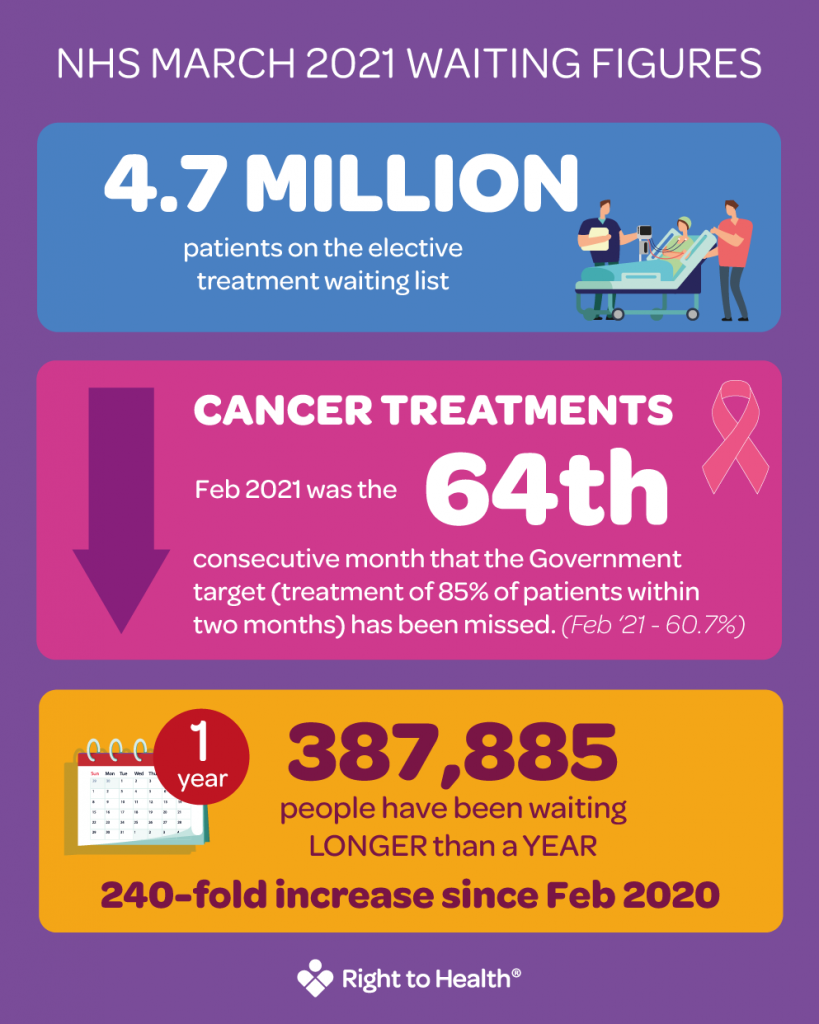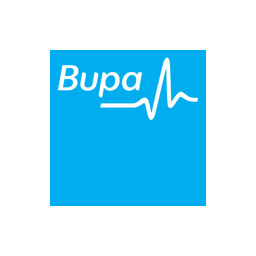"A first-class, professional and courteous service which I have no hesitation in recommending"
Thousands of 5 Star Reviews & 45,000 happy customers
With a funding squeeze on the NHS since 2010 and increasing staffing shortages the NHS was already under significant pressure before the pandemic hit.
It is more than four years since the 18-week referral-to-treatment standard for planned care was last met, more than five years since the national four-hour A&E standard was met and more than six years since the 62-day cancer treatment standard was met.
The 62-day waiting time standard for cancer treatment hasn’t been met nationally since 2013/14.
387,885 patients were waiting over 52 weeks to receive treatment at the end of February 2021, a 240-fold increase from the count of 1,613 in February 2020. This is the highest monthly count of patients that have waited this long since September 2007.
The overall median waiting time for treatment and the number of patients waiting over 18 weeks for treatment increased again in February 2021.
The elective treatment waiting list increased to 4.7 million in February. This is higher than the 4.43 million people that were waiting last year and is likely an under-representation (due to a drop in referrals since March 2020).
The median wait for treatment increased from 12.1 weeks in January to 12.6 weeks in February; 5.1 weeks more than the median wait seen in February 2020.
69.7% of cancer patients were treated within two months of an urgent GP referral (1.5% decrease from January), making February the 64th consecutive month that the Government target for Cancer Patient treatment (treatment of 85% of patients within two months) has been missed.
The number of people waiting six weeks or more for diagnosis of treatments including MRIs, colonoscopies and gastroscopies stood at 377,651 in January – down 34% compared with the levels seen in April 2020 – but still eight times as high as the same month last year.
King’s Fund health thinktank described the data as “a bleak picture of the challenges facing the English health service”.
David Maguire, a senior analyst at King’s Fund, said: “Nearly one in 12 people on NHS waiting lists have now been stuck waiting over a year. Even if the NHS meets its challenging targets to increase activity in hospitals, the queues for care are set to continue growing for many months to come.
“Long waiting times don’t just affect patients in need of hospital or cancer care. There are now growing concerns about access to community services that help to keep people healthy, and mental health services, especially those for children and young people.”









